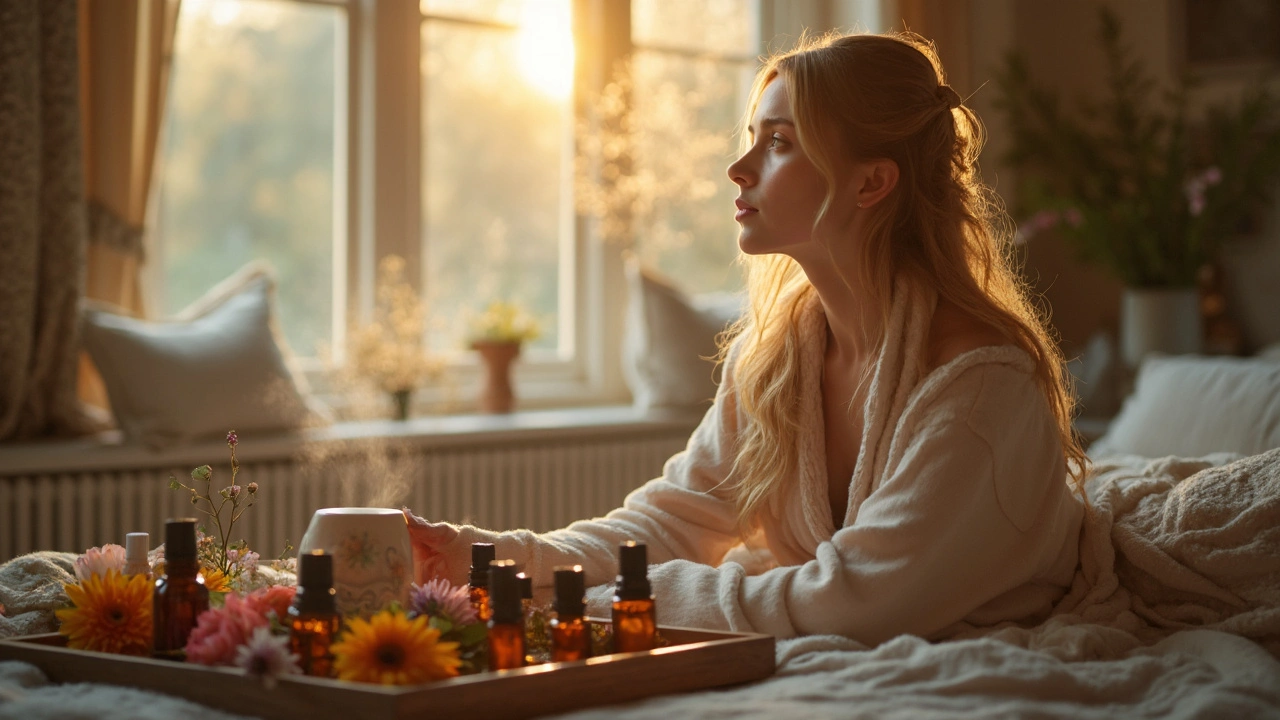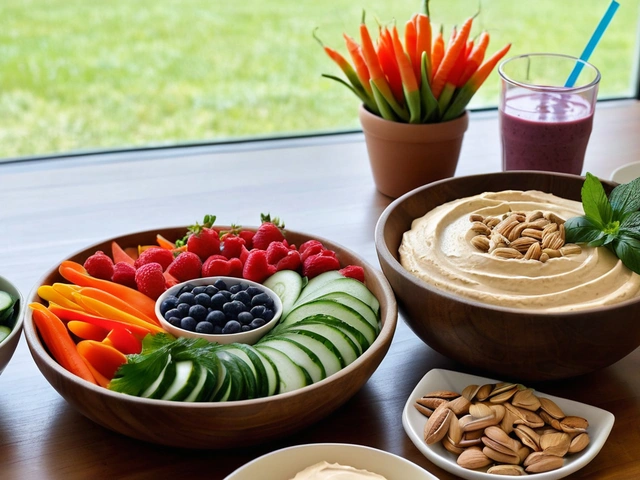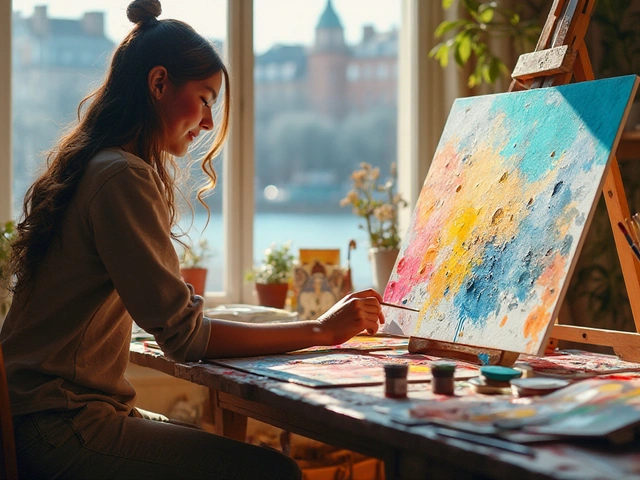Walk into a room that smells like fresh lavender or crisp eucalyptus, and your mood just shifts, right? Scents aren’t just pleasant—they actually trigger tiny switches in your brain that control stress and relaxation. That’s the basic idea behind aromatherapy: using concentrated oils from plants to boost your well-being, clear your head, or help you unwind after a long day.
It’s not magic or just a trendy spa thing. Science backs it up. For example, the smell of lavender has been shown to help people fall asleep faster and feel less anxious, while peppermint oil can make you feel more alert. The best part? You don’t need fancy gear or a pro license to start. All you need is a bottle of essential oil and a way to take in the scent, like a diffuser, a few drops in the shower, or even a dab on your wrist.
Getting started is pretty simple, but there are some things to watch out for. Not all oils are created equal—some are safe to breathe but can irritate your skin, and a few should never go near kids or pets. If you’re ready to experiment, stick around for tips on picking the right oils and using them safely around your home.
- How Aromatherapy Works
- Choosing the Right Essential Oils
- Safe Ways to Use Aromatherapy
- Aromatherapy for Everyday Stress and Sleep
- Tips for Creating a Relaxing Space
How Aromatherapy Works
The science behind aromatherapy comes down to how your nose and brain work together. When you sniff an essential oil, tiny molecules travel up your nose and hit your olfactory nerves. These nerves send quick messages to the limbic system, the part of the brain that handles emotions, memory, and even some body functions like heart rate. That’s why certain scents instantly make you feel relaxed or alert—they actually flip switches in your brain.
Some oils trigger your body to chill out, slow your pulse, and lower your blood pressure. For example, lavender and chamomile are well known for their calming effects. Citrus scents like orange or lemon, on the other hand, tend to perk you up and help with focus. What’s wild is your body reacts fast: one study found people exposed to lavender oil had measurably lower anxiety within 10 minutes.
Here’s a quick breakdown of how aromatherapy stacks up in scientific studies:
| Essential Oil | Main Effect | Proven Benefit |
|---|---|---|
| Lavender | Calming | Reduces anxiety, improves sleep in several clinical studies |
| Peppermint | Uplifting, Clears congestion | Improves alertness, eases tension headaches |
| Lemon | Boosts mood | Shown to lower stress levels and improve frame of mind at work |
To sum it up, aromatherapy works because your sense of smell is closely linked to emotional centers in your brain, not just the language or logic parts. So if you automatically feel calmer walking into a spa or feel a kick of energy from sniffing mint, it’s not your imagination—it’s your body’s chemistry in action.
- Inhaling oils is the most common way people use aromatherapy, but you can also apply diluted oils to your skin.
- Results can show up fast, sometimes in as little as a few minutes.
- The key is to pick the right oil for what you want—calm, wake up, focus, or chill out.
Choosing the Right Essential Oils
Walking into the world of essential oils can feel overwhelming. Shelves are packed with little bottles, all promising different things. The trick is to know what you want to get out of aromatherapy. Do you need better sleep, less stress, or just a pick-me-up?
Some essential oils have been studied more than others. Here’s a quick breakdown of popular options and what they’re known for:
- Lavender: Great for chilling out, sleeping better, and easing stress.
- Peppermint: Good for boosting energy and clearing mental fog. Some people use it for headaches.
- Eucalyptus: Awesome if you’re stuffed up, especially during cold season. It helps open the airways.
- Lemon: Used to lighten your mood and freshen up a room. Some use it for focus.
- Tea Tree: Known for cleaning and fighting off germs, although mostly used on skin or for cleaning blends.
- Chamomile: Tends to make folks feel more relaxed and can help with sleep.
When you buy oils, make sure they’re labeled as 100% pure essential oil—no extras or chemicals. If the price seems too good to be true, it probably isn’t pure. Real essential oils usually come in small, dark glass bottles (amber or cobalt blue) to keep the oils fresh.
Here’s a helpful stat: One study out of the University of Maryland tracked sleep improvement in adults using lavender aromatherapy—those using it daily fell asleep about 15 minutes faster and woke up less often than people who didn’t use any scent.
| Oil Name | Main Benefit | Best Use |
|---|---|---|
| Lavender | Relaxation, Sleep | Diffuser, Pillow Spray |
| Peppermint | Energy, Focus | Desk Diffuser, Inhaler |
| Tea Tree | Cleaning, Germs | Surface Spray, Diffuser |
| Eucalyptus | Clear Sinuses | Shower, Diffuser |
| Lemon | Mood Boost | Room Freshener, Diffuser |
If you’ve never used an oil before, try one at a time. Keep a little log of how each scent makes you feel or any changes you notice. And remember, what works for your friend may not be your favorite—scents are personal.

Safe Ways to Use Aromatherapy
When it comes to using aromatherapy, a little know-how goes a long way. People love the idea of essential oils, but not every method is safe for every person or situation. Some oils are strong enough to irritate your skin, some should never touch your eyes, and a few can even mess with certain health conditions. Here’s what you need to know so you get the benefits—without any drama.
If you want to breathe in aromatherapy, diffusers are hands-down the simplest and safest bet. Just add a few drops of your chosen oil to water in the diffuser—most machines will tell you how much to use. Feel free to try a steam bowl, too: put hot (not boiling) water in a bowl, add a couple drops of oil, lean over, and carefully breathe in the steam. Just keep your face at least a foot away to avoid steam burns.
For topical use (that’s straight on the skin), always mix essential oils with a carrier oil like coconut or jojoba—never use them undiluted. The general rule is about one drop of essential oil for every teaspoon of carrier. Try a patch test first. Put a tiny bit on your forearm and wait a day to check for any reaction before going bigger.
Some oils—like tea tree, peppermint, and eucalyptus—aren’t safe for kids, pregnant people, or pets. Dogs and cats can have serious reactions just from inhaling certain oils. Check labels and look up safety info if you aren’t sure.
If you’re thinking about taking essential oils by mouth, that’s a hard no unless a doctor or certified expert gives the green light. Swallowing oils incorrectly can be dangerous, even if they sound natural or healthy.
- Go for glass bottles with tight lids and keep them in a cool, dark place. Sunlight and heat break down oils fast.
- Always keep oils away from your eyes and inside your nose.
- If you spill oils, wash them off with soap and water right away. Don’t just wipe them away.
Playing it safe means you can actually enjoy aromatherapy without worrying about side effects. Just start slow—everyone reacts differently, so pay attention to how you feel each time you try an oil.
Aromatherapy for Everyday Stress and Sleep
Stress hits everyone differently, but honestly, who hasn’t felt tense after a long workday? Aromatherapy is an easy, no-fuss way to help bring your mind and body back down to earth. Certain scents, like lavender, chamomile, and bergamot, have been studied for their calming effects. In a 2021 study, people who inhaled lavender oil before bed reported falling asleep faster and staying asleep longer compared to those who didn’t.
If you’re dealing with stress, here are oils you can try:
- Lavender: The classic. Known for reducing anxiety and helping you rest.
- Bergamot: Has a fresh, citrusy smell that’s actually proven to boost mood and reduce stress hormones.
- Cedarwood: Gives a grounding scent, which can help calm your mind after a hectic day.
- Chamomile: Not just for tea—it’s great for helping you wind down and let go of worries.
For sleep, the big hitters are lavender, sandalwood, and marjoram. A cool tip: mix a couple of drops of your favorite oil with a carrier oil (like coconut) and dab it on your wrists or pillow before bed. If you have a diffuser, add a few drops about 30 minutes before you hit the sack.
Take a look at how different oils can help in different situations:
| Oil | Main Benefit | When to Use |
|---|---|---|
| Lavender | Calms nerves, aids sleep | Before bed, during stressful moments |
| Bergamot | Eases anxiety, uplifts mood | After work, before social events |
| Chamomile | Relaxes body and mind | Evenings, rough days |
| Sandalwood | Deep relaxation, eases tension | Wind-down routines, meditation |
Not a fan of diffusers? Try these quick fixes:
- Add 3-5 drops of oil to a hot shower—let the steam do the work.
- Put a drop on a cotton ball and tuck it in your pillowcase or bra (yes, really—you’ll get little wafts all day).
- Mix with unscented lotion and rub on your hands or feet right before bed.
Whatever method you pick, make sure you’re using true essential oils, not synthetic fragrances, since those won’t give you the same wellness perks. With these simple steps, you can put aromatherapy to work for you and finally get some chill after those non-stop days.

Tips for Creating a Relaxing Space
Your environment matters more than you might think. Creating a relaxing space for aromatherapy isn’t complicated, but there are a few tricks that make a big difference. The main thing? Keep it simple and focus on what makes you personally feel comfortable and at ease.
First, pick the right spot. It could be a corner of your living room, your bedroom, or even just a comfy chair by your window. For the best results, make sure the area is tidy—clutter creates stress, while a clean spot helps your mind unwind.
- Add a diffuser: An essential oil diffuser fills the space with scent without overpowering. Try a model with auto shut-off, so you don’t worry about forgetting to turn it off.
- Mind the lighting: Soft, warm lights set the mood for relaxation. Use table lamps, dimmers, or even string lights for a cozy vibe.
- Choose calming colors: Go for muted colors like pale blues, greens, or warm neutrals for cases where you have some say over the decor.
- Ventilation matters: Open a window or use a fan, especially when trying a new oil for the first time. Good airflow helps scents spread evenly and keeps things fresh.
- Mix in comfy stuff: Throw blankets, soft pillows, or a favorite chair make you more likely to stay and actually relax in your space.
- Quiet background noise: Use a small speaker to play gentle music or nature sounds. Studies show just 30 minutes of relaxing music drops stress levels noticeably.
Worried about which essential oils to use? Here’s a handy table showing common oils and what they’re best for, according to the National Association for Holistic Aromatherapy:
| Essential Oil | Best Use | Extra Tip |
|---|---|---|
| Lavender | Relaxation, sleep, stress reduction | Great before bedtime |
| Peppermint | Energy, focus | Avoid before sleep |
| Eucalyptus | Clearing sinuses, fresh air vibes | Open a window for extra effect |
| Sweet Orange | Uplifting, improving mood | Safe for daytime use |
Little moves can pay off big. Try keeping a small tray with your favorite oils, a couple of cotton pads for dabbing, and matches or a lighter if you like candles. For the best results, make your space a phone-free zone when you're relaxing—just 10–20 minutes away from screens can clear your head and help you get the most out of the scents around you.






